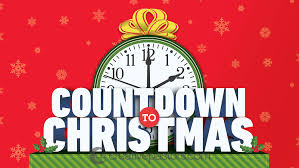Sunday, December 16, 2018
Delray Beach, FL.- I was late arriving at Steve and Lori’s annual holiday party last weekend. I’d been working on the outline of a new book, and I wanted to finish it while I still had a sense of it in my mind.
Steve’s parties are always inspiring. Inspiring is an odd way of describing a “party,” but in this case, it’s warranted. There is something about the elegance of the architecture of their house, how serenely it sits on a wide stretch of the Intercoastal Waterway, and also and mostly the diversity and quality of the guests. It breathes some sort of ambition into me. Makes me feel a little like Nick Carraway visiting his neighbor Jay’s West Egg mansion.
Steve accepted my apology with a smile: “The price of success is hard work,” he said.
“Vince Lombardi,” I replied, happy to recognize the quote.
The occasion was Delray Beach’s annual boat parade, our South Florida attempt to create a semblance of the good cheer generated by the Macy’s Thanksgiving Day Parade. Elaborately lit and decorated boats float up the Intercoastal for 3 hours.

Steve introduced me to Max Weinberg – Max Weinberg of the E Street Band and a decade-long stint as Conan O’Brien’s bandleader. If you didn’t know who he was, you might think – from his physical appearance and the way he conducts himself – that he was a college teacher or a lawyer (the profession he was pursuing before hooking up with Springsteen).
In fact, if Steve hadn’t clued me in before he introduced us, I never would have guessed that he was a rich and famous guy. (And what better praise can you give a successful person?)
Steve had told me that Max is an avid reader and a huge consumer of books about politics. So we talked about that for a while. Then, somehow, the subject of family came up and we talked about how proud we are of our kids. It was a completely normal, unremarkable, but unusually gratifying conversation.
I was interested in his professional life, and felt comfortable asking about it. I was not (to his pleasure, I think) the least bit interested in him as a “rock star.” I wanted to understand the labor and stress of what he did. The day-to-day grind of it. The kind and amount of work that was involved in achieving the success he had.
I was interested because, for a long time, I’ve been thinking (and writing) about what, to my mind, are the virtues of success. My theory is that there is a nearly direct relationship between how much you get paid and how much effort you put into your job. That financial success – if not all success – is 99% hard work.
In describing his career, past and present, Max said nothing to derail that theory. For him, an 8-hour day is a short day, and a 5-day workweek a rare treat.
He told me that he views his skill as a drummer as being secondary to his success. Much more important: He was always on call for new opportunities, always willing to say yes more often than no, and always did whatever it took to not only keep his promises but exceed expectations.
I felt like I was talking not to a rock star but to a senior executive of a Fortune 500 company.
The subject of Springsteen’s one-man show on Broadway came up. I told Max that I’d seen it and was impressed. “Five shows a week – it must have been incredibly hard on him,” I said.
“It’s a commitment, for sure,” Max said. “And a lot of work, too. The physical work is nothing compared to touring with the band. But the responsibility of leaving the house each afternoon, after a day of working on other things, and doing the show… If you could see the look in his eyes before he sets off for the city. He has to drum up the energy to rise to the challenge one more time.”
“He’s the hardest working person I’ve ever known,” Max said.
“Like Vince Lombardi used to say…” I replied.
“Right,” Max said. “It’s the price you must be willing to pay.”










